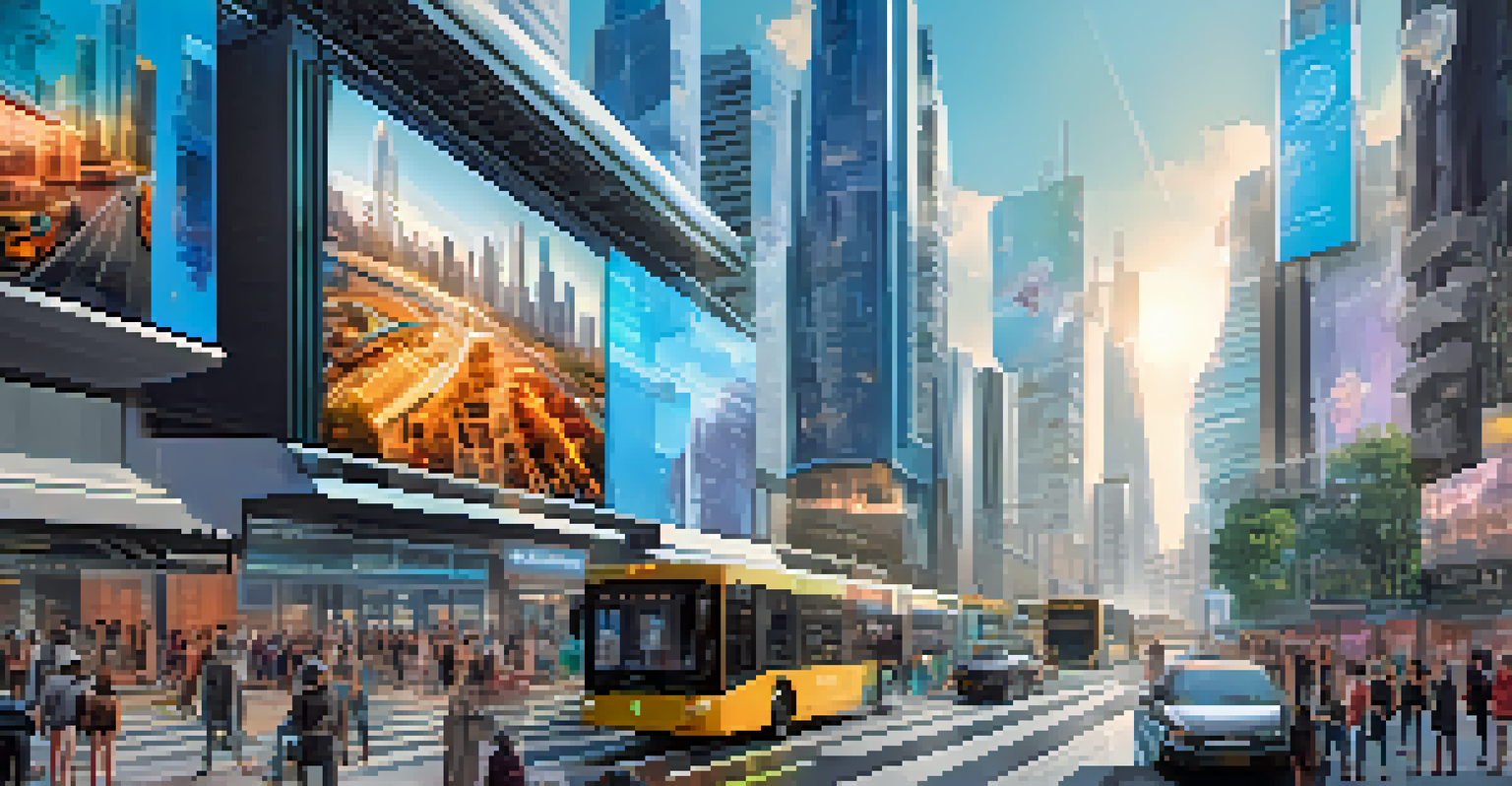The Role of Social Media in California's Political Campaigns

Understanding the Rise of Social Media in Politics
In recent years, social media has transformed the political landscape, especially in California. Platforms like Twitter, Facebook, and Instagram have become essential tools for candidates to engage with voters directly. These platforms allow for quick communication, making it easier for campaigns to share messages, rally support, and respond to opponents in real time.
Social media is not just a tool for communication; it's a platform for political engagement that transforms how citizens interact with their leaders.
One of the most significant advantages of social media is its ability to reach diverse demographics. With nearly 70% of Californians using social media, candidates can tailor their messages to resonate with different groups. For instance, younger voters may be more engaged on TikTok, while older generations might prefer Facebook, highlighting the need for multi-platform strategies.
Additionally, social media enables campaigns to analyze voter behavior through engagement metrics. By observing which posts generate the most interactions, candidates can adjust their strategies to meet the evolving interests of their audience. This data-driven approach allows for more effective outreach and better allocation of resources.
The Power of Grassroots Movements Online
Social media has empowered grassroots movements like never before, allowing ordinary citizens to influence political discourse. In California, we’ve seen numerous campaigns rise from the ground up, leveraging social media to mobilize supporters and raise funds. This democratization of campaigning has shifted power away from traditional political machinery.

For example, the success of movements like the Women's March and climate activism showcases how social media can galvanize public support quickly. Organizers can share information, coordinate events, and amplify their messages widely, often going viral and reaching audiences well beyond their immediate communities. This viral nature can lead to significant political pressure on elected officials.
Social Media Shapes Political Campaigns
Platforms like Twitter and Facebook enable candidates to engage diverse voter demographics and tailor their messages effectively.
Moreover, social media platforms facilitate real-time feedback from constituents. Candidates can gauge public sentiment on various issues, allowing them to refine their platforms based on the concerns of their supporters. This immediate connection fosters a sense of community and encourages active participation in the political process.
Targeted Advertising: A Game Changer for Campaigns
One of the most significant developments in political campaigning is the use of targeted advertising on social media. Campaigns can now create highly specific ads aimed at particular demographics based on factors like age, location, and interests. This precision marketing means that candidates can spend their resources more efficiently and effectively.
In the digital age, grassroots movements can harness the power of social media to amplify their voices and influence change like never before.
For instance, during the last gubernatorial election, candidates used targeted ads to promote their positions on key issues like housing and healthcare. By reaching voters who were most likely to resonate with their messages, they maximized their impact. This tailored approach also helps in combating misinformation by providing voters with accurate information directly from the source.
However, this strategy comes with ethical considerations regarding privacy and data use. As campaigns collect data to enhance targeting, they must balance effective outreach with respecting voter privacy. This ongoing debate highlights the need for transparency in political advertising.
The Role of Influencers in Political Campaigns
Influencers have emerged as vital players in shaping political narratives on social media. Candidates often collaborate with influencers to tap into their established audiences, lending authenticity and relatability to their campaigns. In California, influencers can sway public opinion, particularly among younger voters who may be less engaged in traditional politics.
For example, a popular local influencer might share a candidate's message about environmental policies, effectively reaching thousands of followers who trust their opinion. This informal endorsement can significantly enhance a candidate’s visibility and appeal, especially when the influencer’s values align closely with the campaign's message.
Grassroots Movements Gain Momentum
Social media empowers ordinary citizens to mobilize support and influence political discourse through grassroots campaigns.
However, this trend also raises questions about the credibility of political endorsements. Voters may wonder how much influence these personalities truly have and whether their motivations are aligned with public interest. Transparency in these partnerships is crucial to maintain trust and integrity.
Combatting Misinformation on Social Media
Misinformation is a pressing challenge in the realm of social media, particularly during election seasons. False narratives can spread rapidly, influencing public perception and voter behavior. In California, candidates must be vigilant about addressing misinformation to maintain their credibility and ensure informed voting.
To combat this issue, campaigns often employ fact-checking strategies and actively engage in debunking false claims. By providing accurate information and responding promptly to misinformation, candidates can protect their reputation and foster a more informed electorate. Collaboration with reputable fact-checking organizations also adds an extra layer of credibility.
Moreover, social media platforms themselves are taking steps to address misinformation. Initiatives such as labeling false information and promoting authoritative sources can help guide voters toward accurate content. However, the effectiveness of these measures remains a topic of ongoing discussion and scrutiny.
Engaging Voters Through Live Streaming and Events
Live streaming has become a dynamic way for candidates to engage with voters and create a sense of immediacy. Through platforms like Facebook Live and Instagram Live, candidates can host virtual town halls, Q&A sessions, and rallies, making their campaigns more accessible. This real-time interaction allows voters to feel connected and involved in the political process.
For instance, a candidate might host a live Q&A session about their policy positions, encouraging viewers to ask questions directly. This format not only fosters transparency but also humanizes the candidate, allowing voters to see them beyond the campaign ads. The immediacy of live streaming can generate excitement and buzz around campaign events.
Targeted Ads Revolutionize Outreach
Campaigns leverage targeted advertising on social media to efficiently connect with specific voter demographics based on their interests.
However, candidates must be prepared for the spontaneity of live interactions. Questions can be challenging, and unexpected comments may arise, requiring candidates to think on their feet. Embracing this unpredictability can enhance authenticity, ultimately strengthening the candidate's relationship with voters.
Future Trends: The Evolution of Social Media in Politics
As technology continues to evolve, so will the role of social media in political campaigns. Future trends might include the rise of new platforms, advancements in artificial intelligence for targeted messaging, and immersive experiences through virtual reality. California’s political landscape will likely adapt to these changes, shaping how candidates connect with voters.
For example, the potential for augmented reality (AR) in campaigns could allow voters to visualize policy impacts directly in their communities. Candidates may leverage AR to showcase their visions for urban development or environmental sustainability, making their proposals more tangible and compelling.

Moreover, as social media becomes more integrated with daily life, the line between personal and political engagement may blur further. Candidates will need to navigate this evolving landscape thoughtfully, balancing authenticity with professionalism to maintain voter trust and engagement.